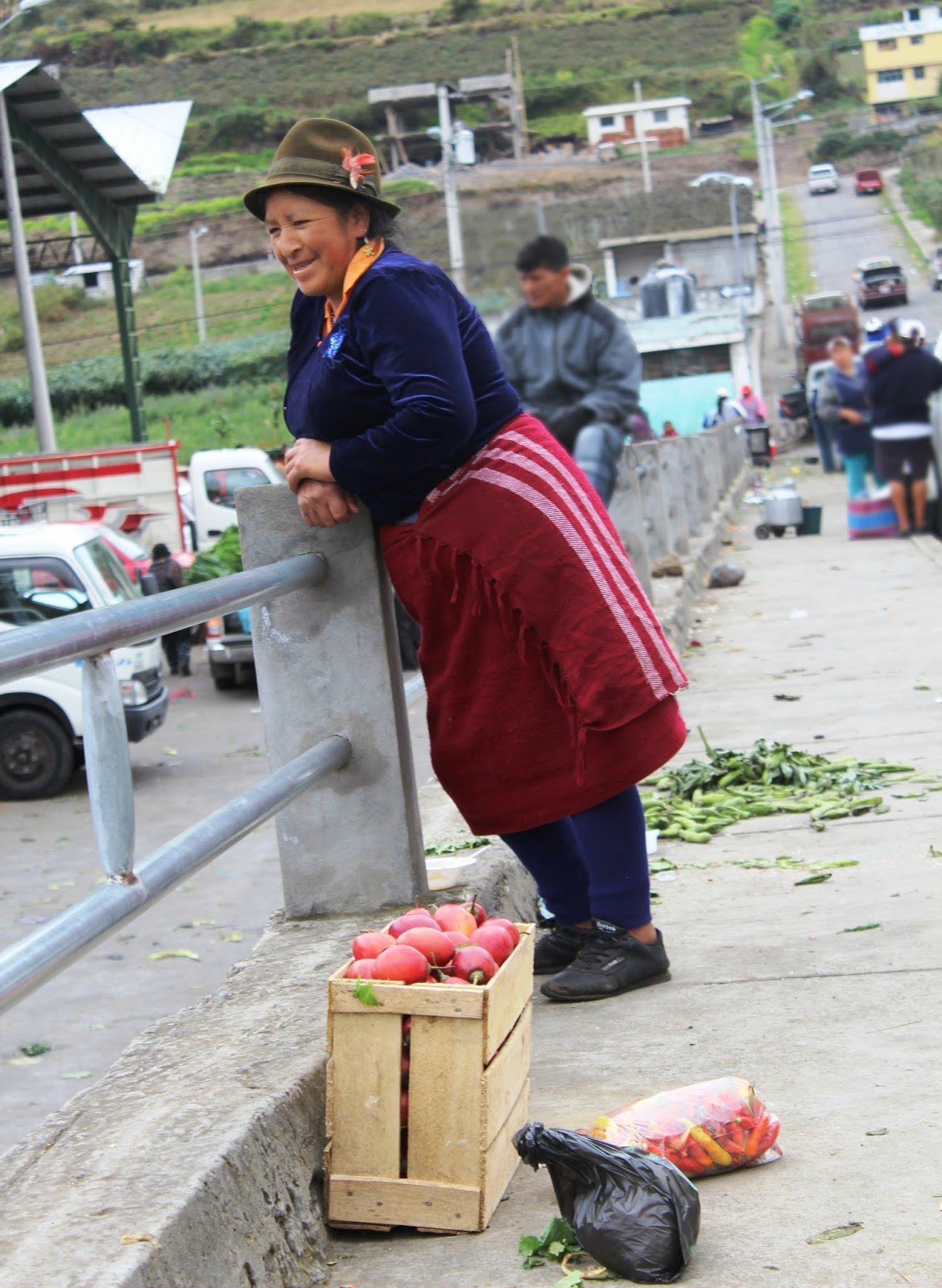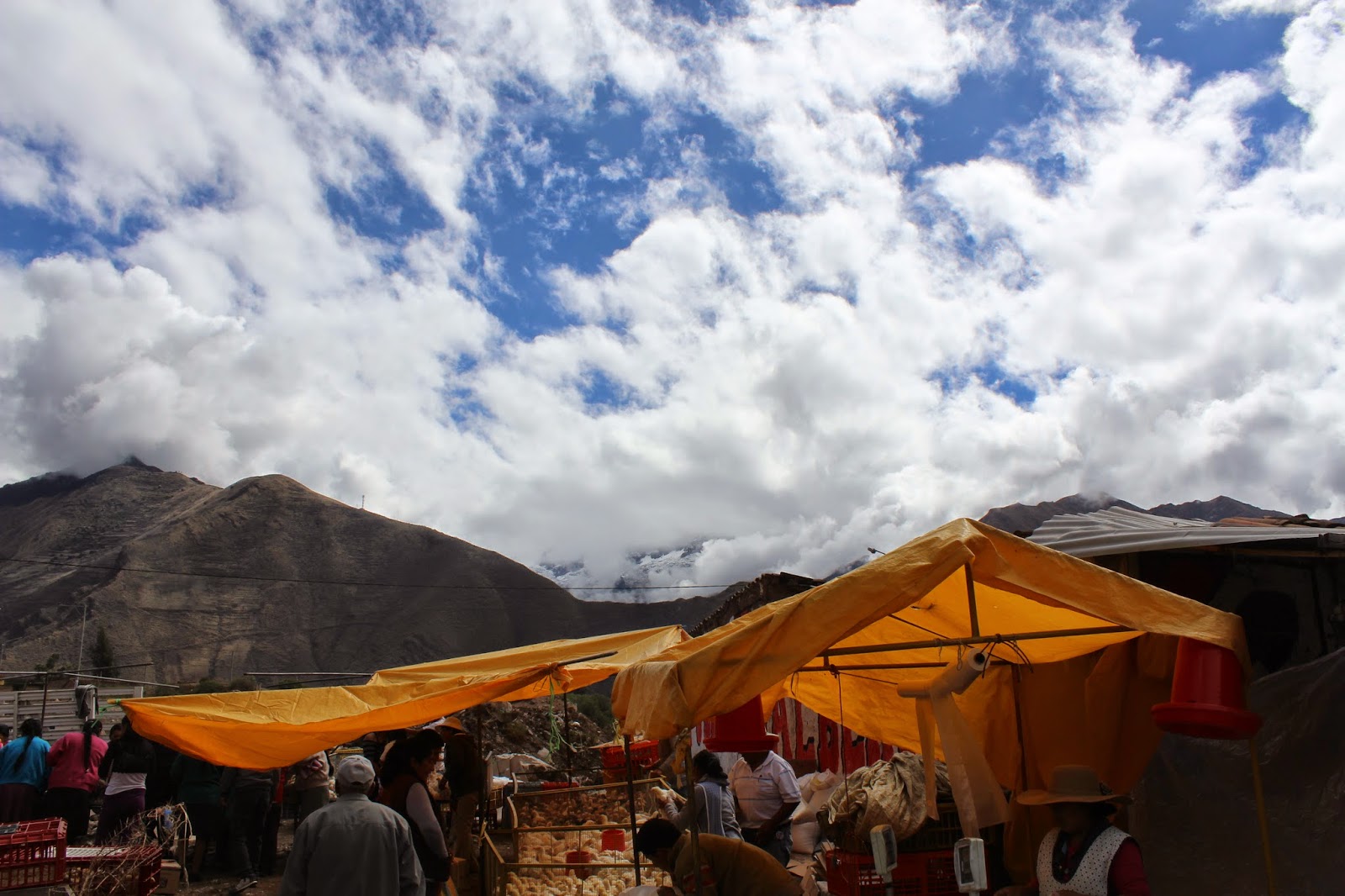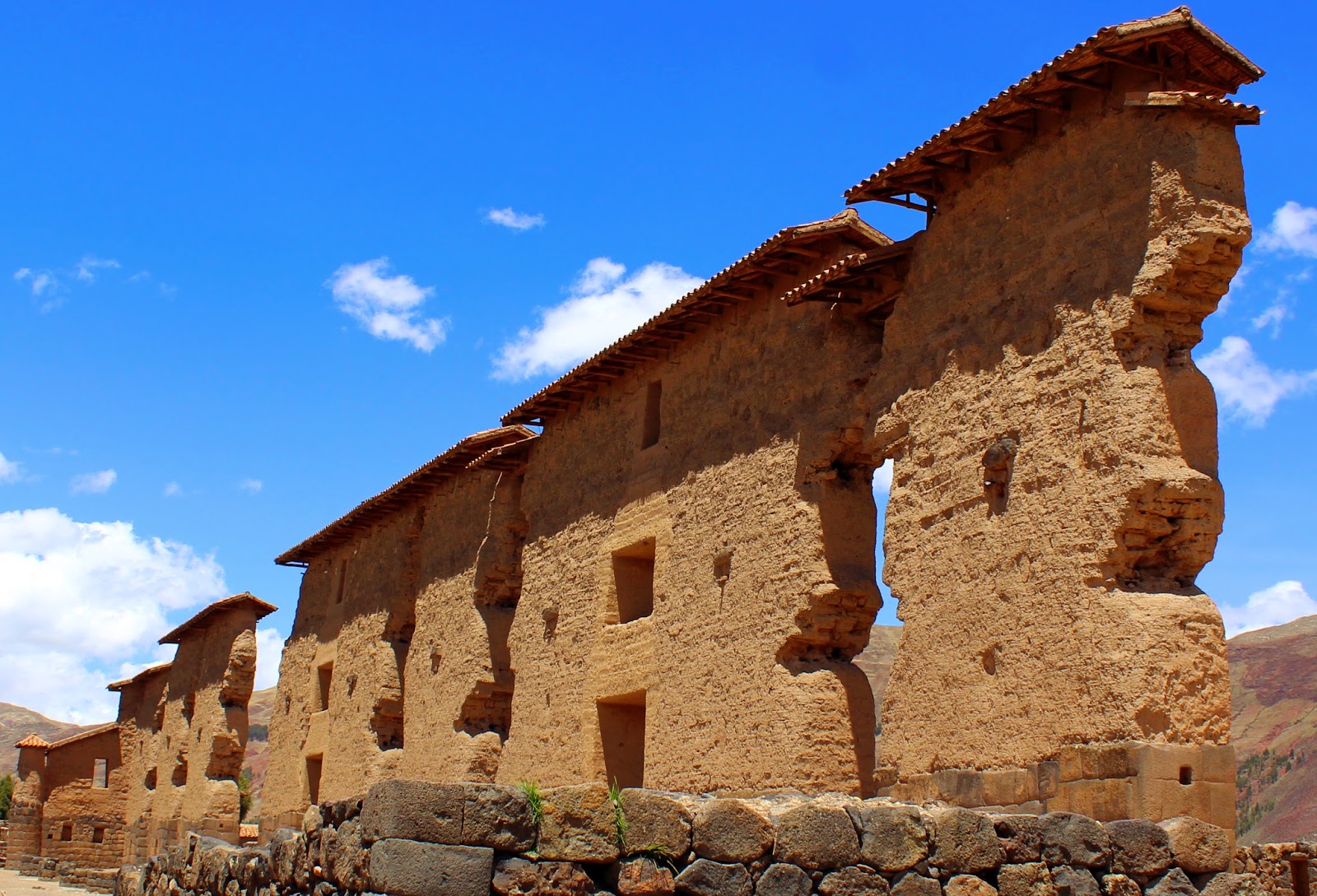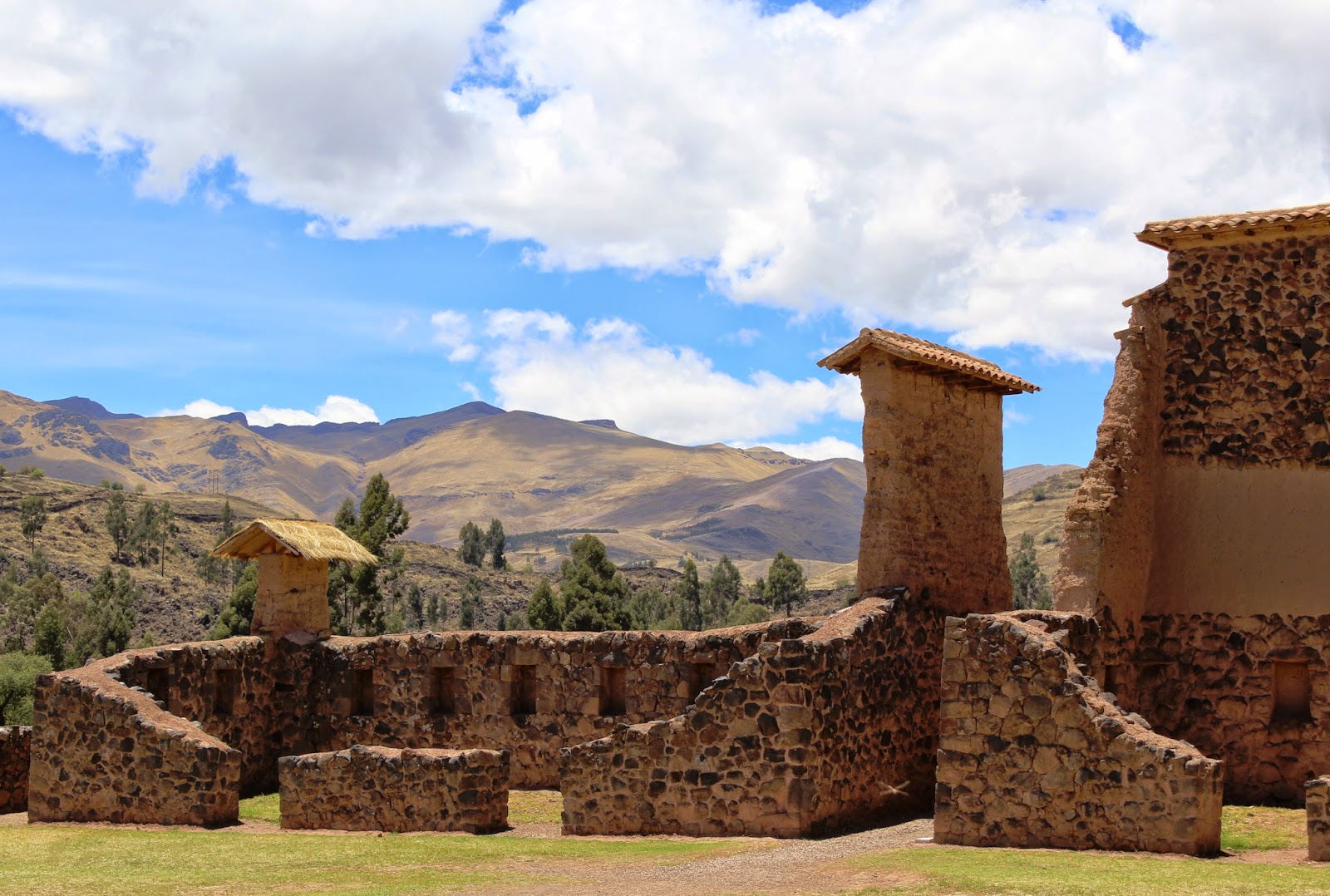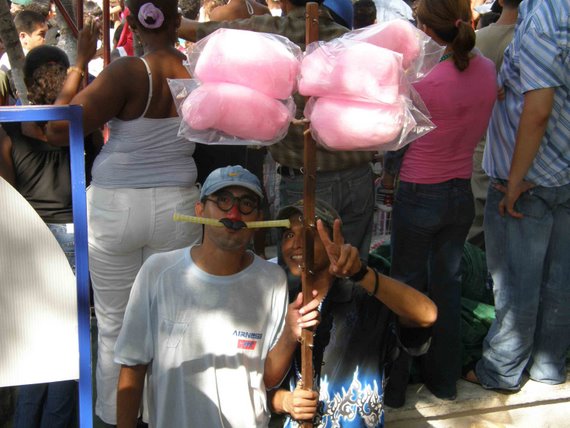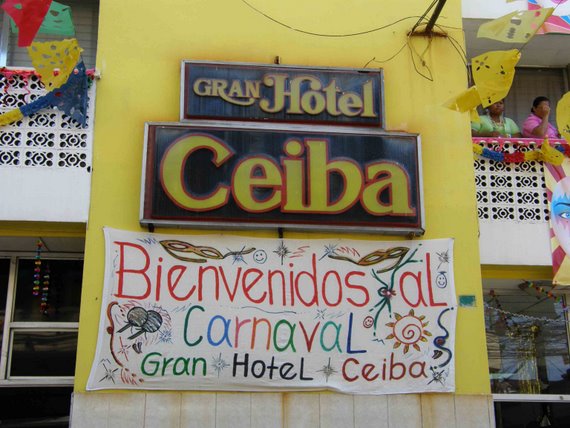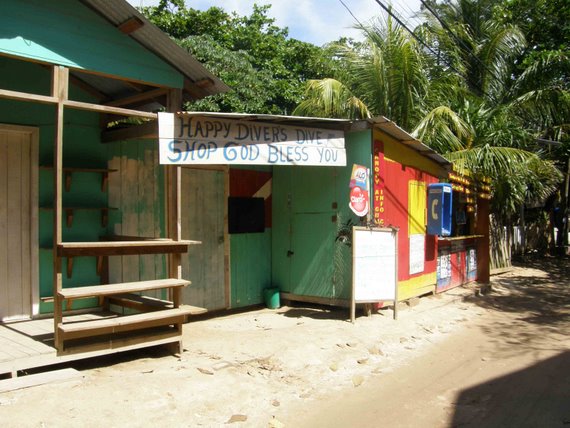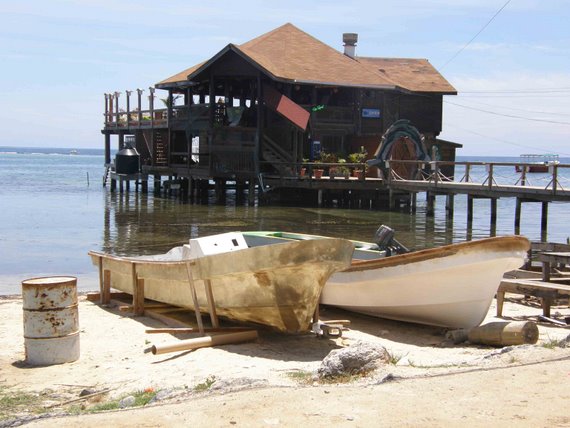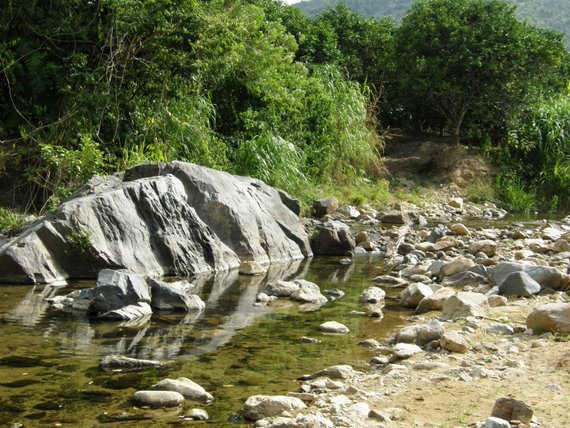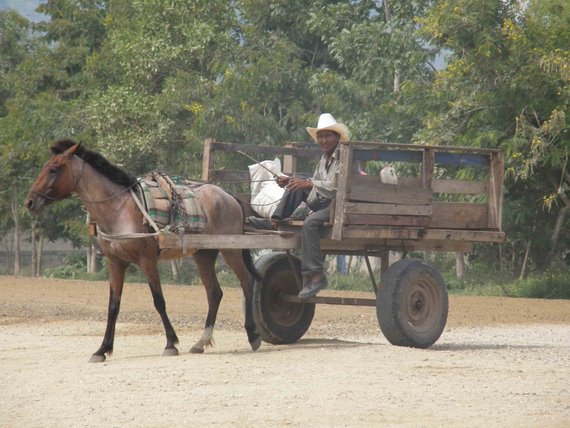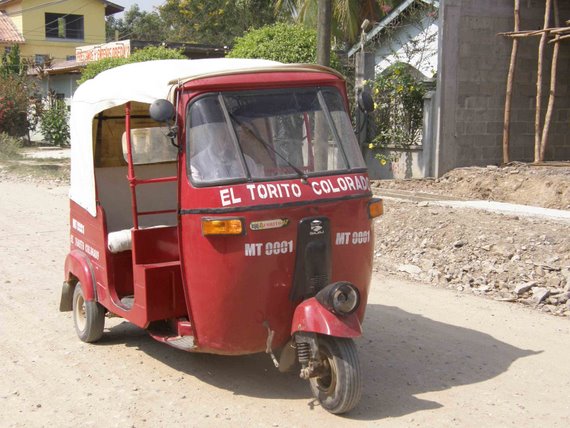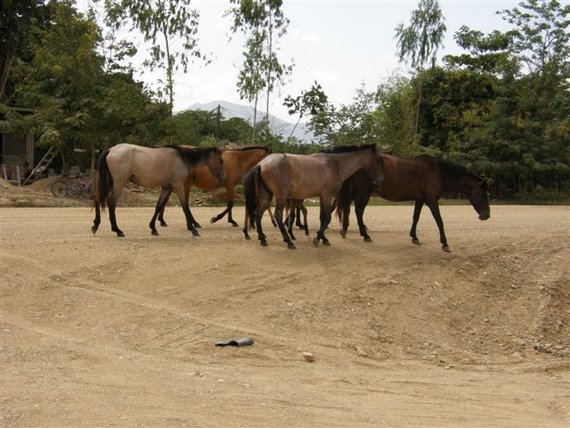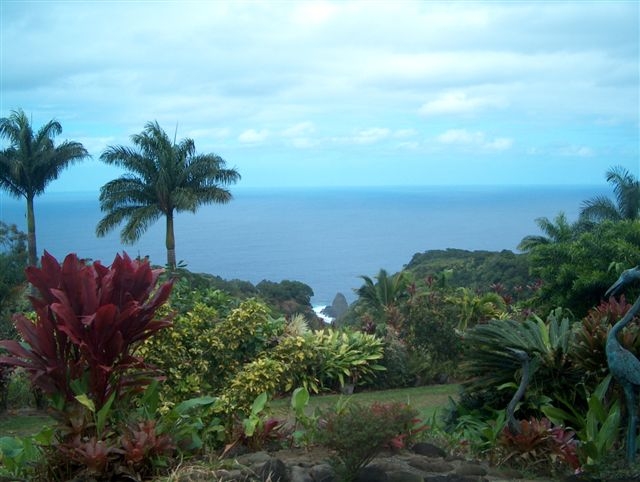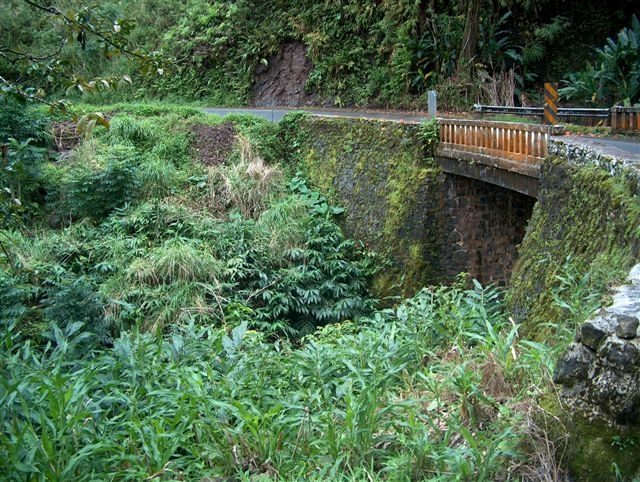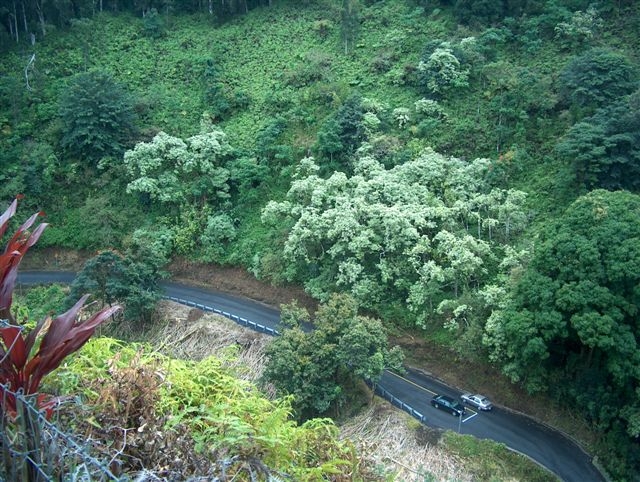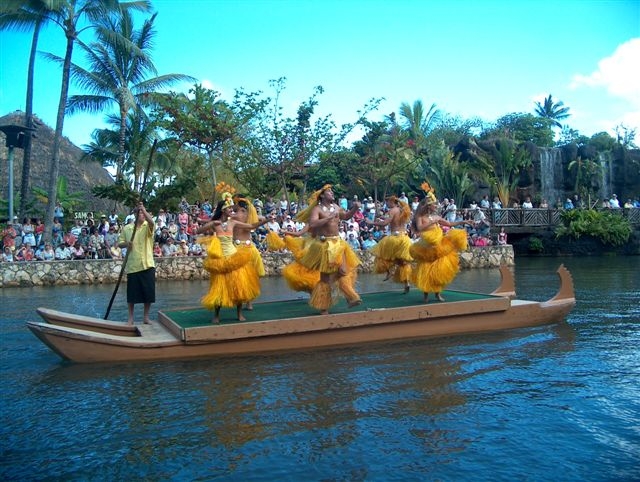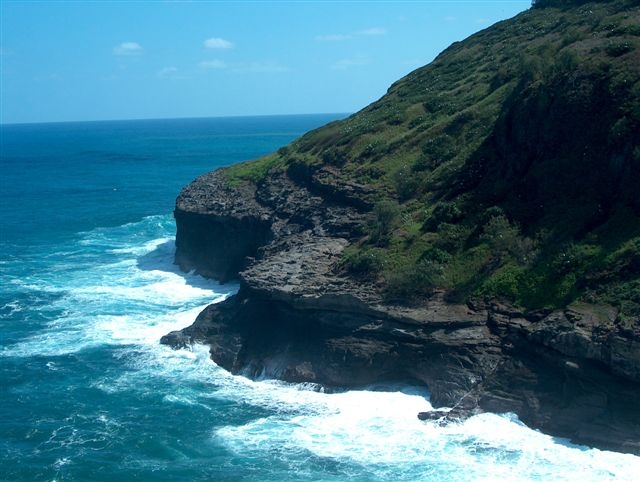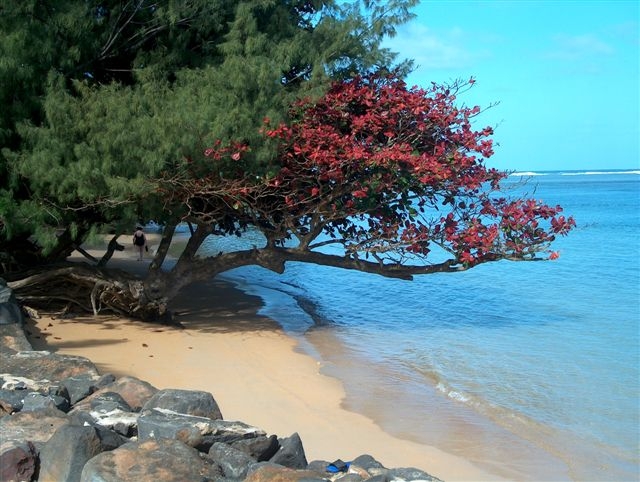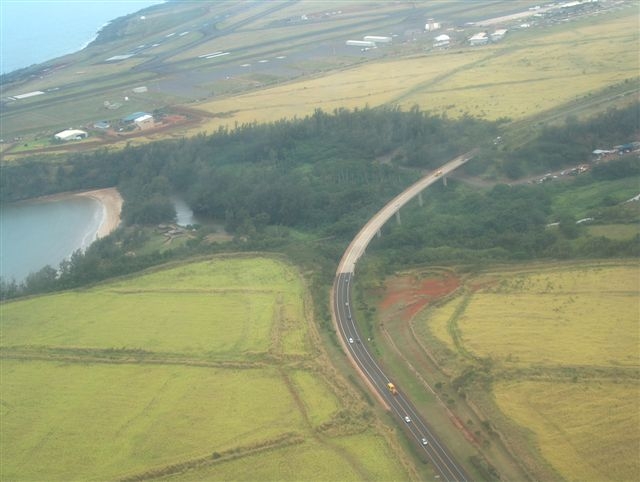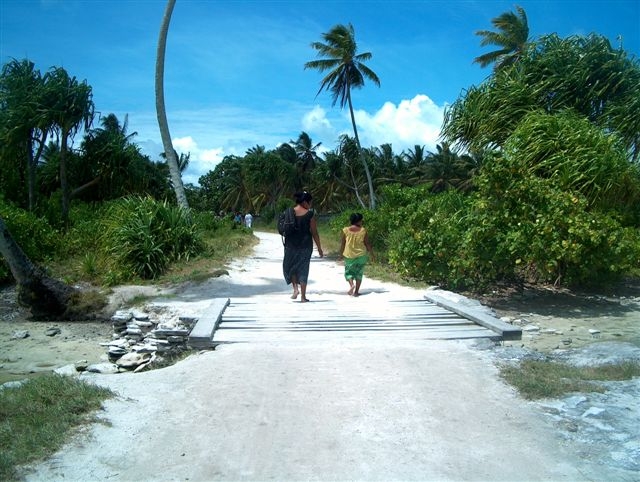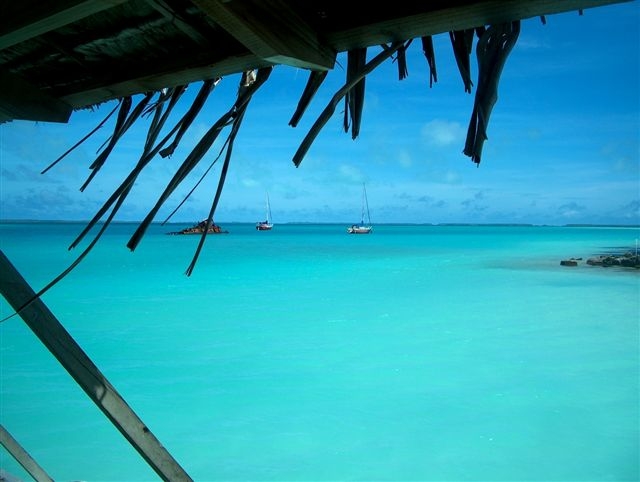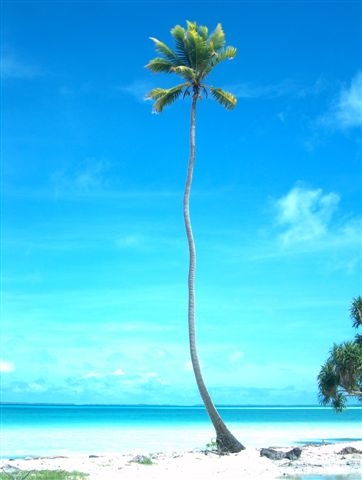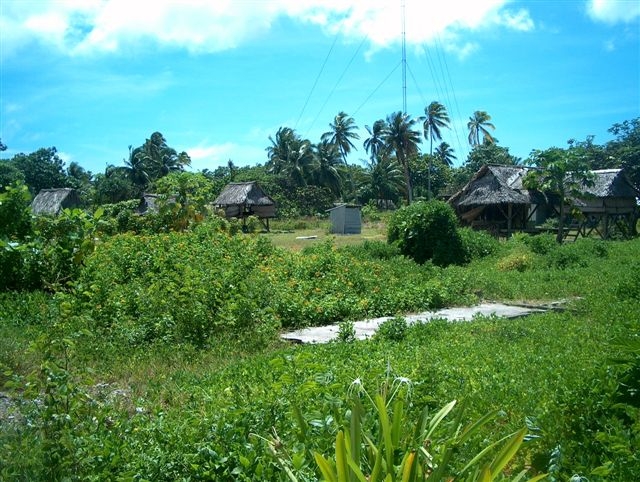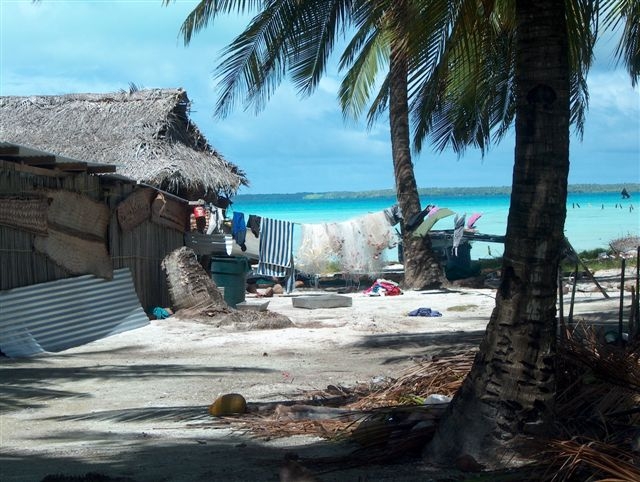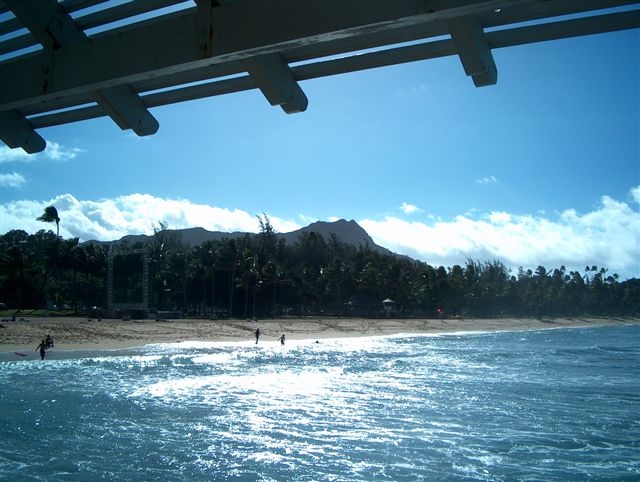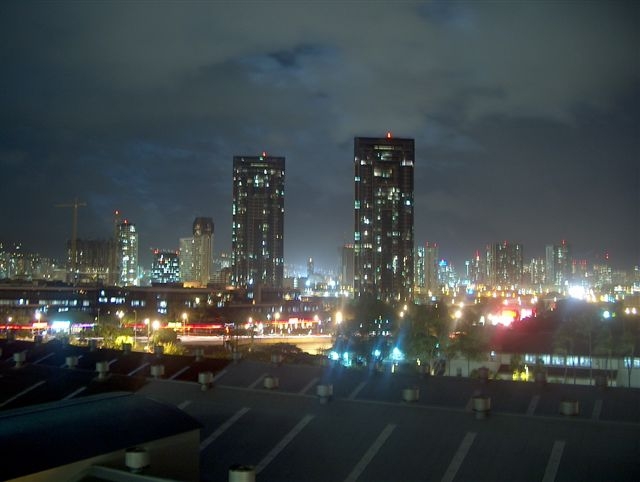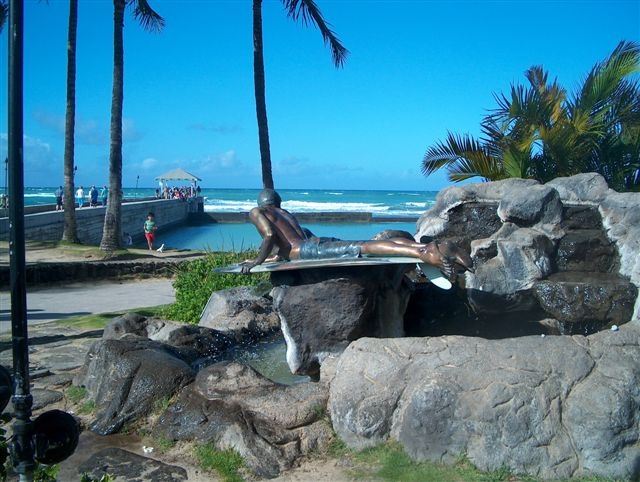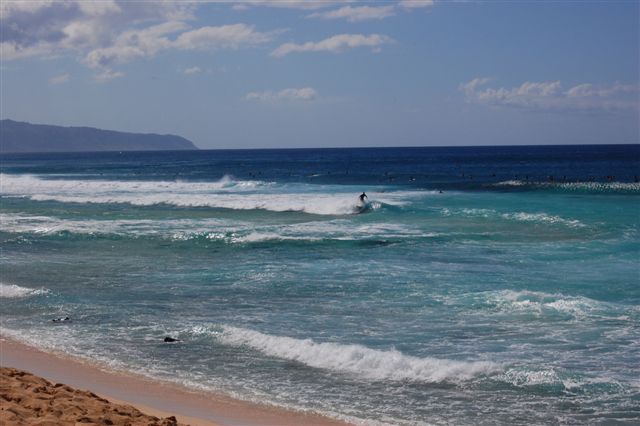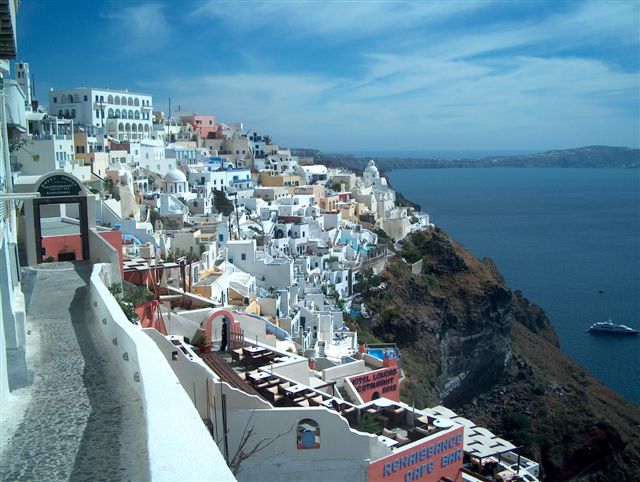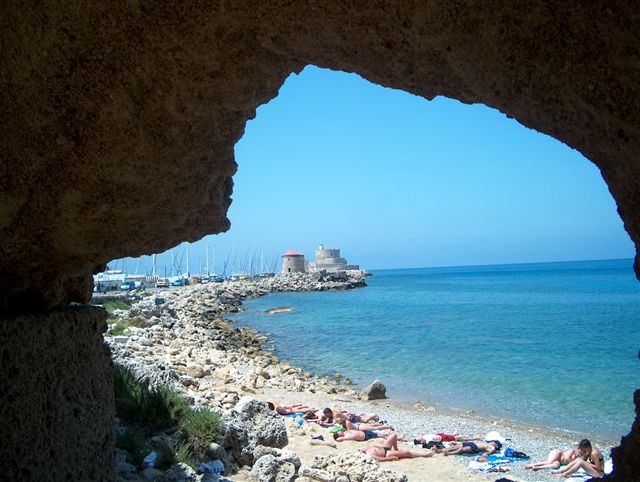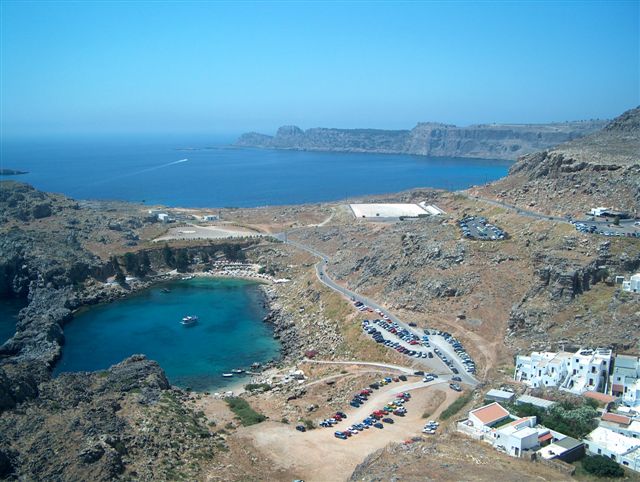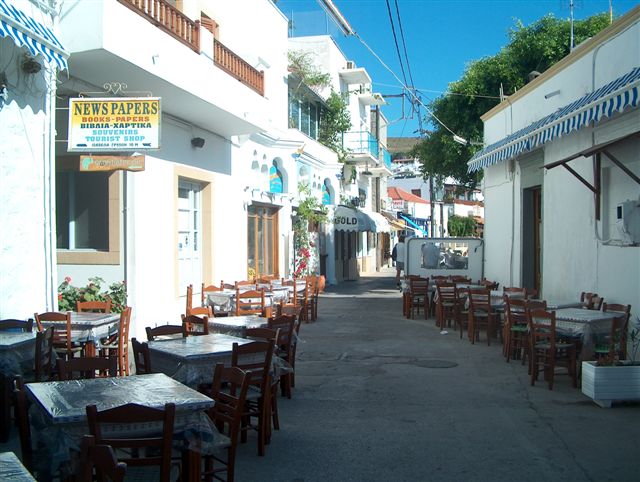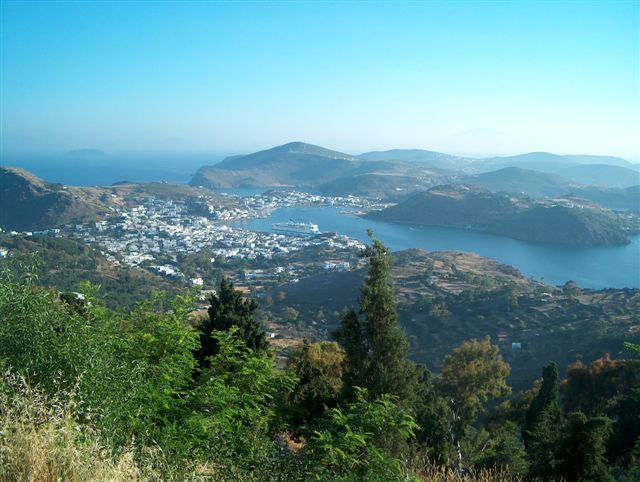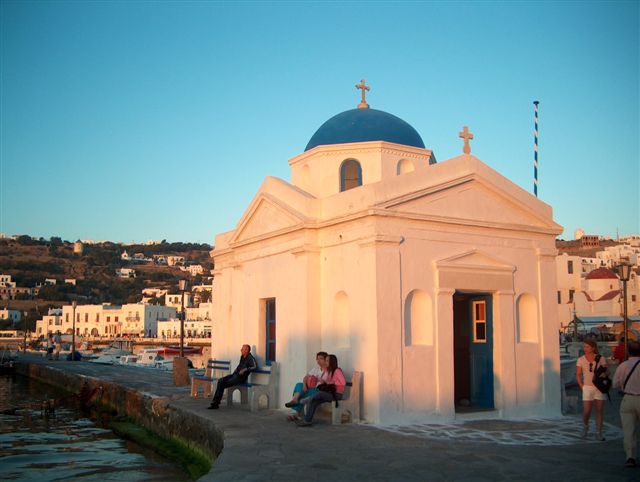Ecuador and Peru
Ecuador
Quito - What a magnificent city!
Quito is the capital city of Ecuador, and at an elevation of 9,350 feet above sea level, it is the highest official capital city in the world. It is located in South America Ecuador in the Guayllabamba river basin, on the eastern slopes of Pichincha, an active volcano in the Andes mountains. With a population of 2,671,191 according to the last census (2014), Quito is the second most populous city in Ecuador.
The historic center of Quito has one of the largest, least-altered and best-preserved historic centers in the Americas. Quito, along with Kraków, were the first World Cultural Heritage Sites declared by UNESCO in 1978. The central square of Quito is located about 25 kilometers (16 mi) south of the equator; the city itself extends to within about 1 kilometer (0.62 mi) of zero latitude. A monument and museum marking the general location of the equator is known locally as la mitad del mundo (the middle of the world), to avoid confusion, as the word ecuador is Spanish for equator.
 |
| Quito Cathedral |
 |
| Colonial Quito |
 |
| View from the top - at the TelefériQo - cable car |
 |
| Housing |
 |
| Basilica - to the left of this image |
 |
| Quito Basilica |

 |
| TelefériQo - cable car - 12,934 feet — in Quito - A view of the hiking trail near the summit. |
 |
| Quito street |
 |
| For sale |
 | |
| Plaza Foch - restaurant and entertainment area |
Mitad del Mundo (Middle of the World)
26 Km from Quito this site is known as the Middle of the World as it was said to be located on the equator.Straddling the northern and southern hemispheres
Otavalo, Cotachachi and Papallacta Ecuador
Near OtavaloNear Otavalo
Cabanas del Lago, Otavalo
Cabanas del Lago, Otavalo
Cabanas del Lago, Otavalo
At Peguche Waterfall - (Peguche Waterfall is a nice 18m waterfall, situated in a small park some 3km from Otavalo. After the waterfall, the river takes the name of "Jatun Yacu" or "Big Water". This is a sacred place for the Indians as they have a close relationship with nature, especially mountains, water and certain trees. Lagoons, springs and waterfalls are considered places full with powers, where the natives carry out ritual baths of purification or pacts with the spirits of the place. Solstice celebrations take place at the falls around the 21st of June.)
At Peguche Waterfall
Cotachachi - famous for leather clothing.
Termas de Papallacta
Ecuadorian Amazon
Our beautiful jungle resort was on the Napo River near Ahuano,
Ecuador. At the port of Tena long boats were boarded to transport us to a resort. Our days were spent hiking and exploring the jungle. On our expeditions "jungle
gear" was required which meant long pants, long sleeve shirts, rubber boots, bug
spray, sunscreen, rain ponchos and plenty of water. It was a hot and sweaty time but when the rain did fall it
was perfectly refreshing.
Long boats used for transport on the Amazon. — in Tena, Ecuador.View from our balcony
Making Cicha. (corn beer) http://en.wikipedia.org/
On the Napo River
Suspension bridge.
The view after a long hike in the rain! Well worth it.
Not far from the middle of the world but a long way from everything else.
The city is also a Roman Catholic religious center, as some Catholic believers say that the Virgin Mary appeared nearby a waterfall. So a sculpture of the virgin, called Virgen de Agua Santa, was placed in this cathedral.
Banos, Ecuador
Banos
is a beautiful city. People come here for the beauty of the
surrounding area including a volcano and the waterfall El Paílón del
Diablo. The history of the town is linked with the highly active
Tungurahua volcano. In October 1999, all 17000 + residents were forced
to evacuate the city for weeks.
Not far from the middle of the world but a long way from everything else.
The city is also a Roman Catholic religious center, as some Catholic believers say that the Virgin Mary appeared nearby a waterfall. So a sculpture of the virgin, called Virgen de Agua Santa, was placed in this cathedral.
Banos is a center for Adventure Tourism.
Paílón del Diablo - near the waterfall
Paílón del Diablo - I tasted this green fruit - very sour and served with salt. It is called Jocote. http://en.wikipedia.org/
Paílón del Diablo — in Baños, Tungurahua, Ecuador.
Hacienda Manteles
At a nearby market
Spinning yarn and selling guinea pig food.
Hacienda La Cienega
Paílón del Diablo - near the waterfall
Paílón del Diablo - I tasted this green fruit - very sour and served with salt. It is called Jocote. http://en.wikipedia.org/
Paílón del Diablo — in Baños, Tungurahua, Ecuador.
Ecuadorian Market
What a privilege visiting a rural market!
Hacienda Manteles, Banos & Hacienda La Cienega
We
had an amazing stay at Hacienda Manteles which had the most beautiful
grounds imaginable. The following day we enjoyed lunch at the Hacienda
La Cienega, one of the oldest and most historical haciendas in Ecuador,
belonging to the descendants of Marques of Maenza dating back to the
17th century, with spectacular views to the Cotopaxi National Park and
volcano.
Hacienda MantelesHacienda Manteles
At a nearby market
Spinning yarn and selling guinea pig food.
Hacienda La Cienega
Off to Peru
Lima
Lima is a beautiful city on the Pacific Ocean. It has a population of 8 million people. The Historic Centre of Lima was declared a UNESCO World Heritage Site in 1988. The architecture is colonial.
Lima
Larcomar Shopping Centre
Larcomar
Miraflores
Larcomar
Miraflores
Miraflores Pier
Lima art
Historic Lima
Historic Lima
Plaza Mayor - Lima
Monastery
Monastery
Urubamba Sacred Valley
Inca Warrior King - common monument in Peruvian towns and cities.Roadside vendor
Snapped from the bus window. These ladies are all waiting for customers to sell to.
Outskirts of Cusco
Outskirts of Cusco
Outskirts of Cusco
The arrangement of these ceramic sculptures is known as Torito de Pucara. They are made in a town called Pucara. — at Valle Sagrado ~ Urubamba.
Quechua woman in the Sacred Valley.
Cuy or guinea pig on the right hand side of the plate near the center (behind the quinoa). Can't say it's a favorite.
Guinea Pig
Quechua man
Quechua man
Ollantaytambo is a town and an Inca archaeological site in southern Peru 60 kilometers from Cusco. It is located at an altitude of 9,160 feet above sea level
The Incas built several fieldstone storehouses in the hills. Their location at high altitudes, where there is more wind and lower temperatures, defended their contents against decay. To enhance this effect, the storehouses have ventilation systems. It is believed that they were used to store the production of the agricultural terraces built around the site.Grain would be poured in the windows on the uphill side of each building, then emptied out through the downhill side window. You can see one of these storehouses in this picture. It is located slightly to the right of center the mountain and is lighter in colour. — at Ollantaytambo!!
Inca Kola is a Peruvian soft drink which was so popular in Peru that Coca Cola purchased it in 1999. It is available in regular and diet. The bright yellow colour of the drink as well as it's bubblegum like flavour did not win me over.
Loved our hotel! Casa Andina Private Collection Sacred Valley, Urubamba
The arrangement of these ceramic sculptures known as Torito de Pucara varies from village to village and from homeowner to homeowner and I learned that these were not just a roof decoration but something of great significance. In order to honor Pachamama (or Mother Earth) the ceramic sculpture is often placed on the roof of a new house when the home is first blessed and this creates good economic well-being of the family living there. These small ceramic bulls represent happiness, wealth and fertility. Sometimes their are water jugs which also represent fertility. This is just one of the many examples from the mixture of Catholic and Quechua religions. — at Valle Sagrado ~ Urubamba.
Urubamba Market
Urubamba
is a small town in Peru, located near the Urubamba River under the
snow-capped mountain Ch'iqun. Located one hour from Cusco, Urubamba is
the largest town in the Sacred Valley of the Incas. It is also located
near a number of significant ruins of the Inca Empire, including Machu
Picchu. There is a popular market selling fresh fruit and vegetables and
also pots, pans, and other essential items. The market does not really
cater to tourists. These images are from this market.
Making a purchase!
Corn
Snow capped mountain peaks
So much colour at this amazing market! — in Urubamba, Peru.
In the 1920s, a shipment of bowler hats was sent from Europe to Bolivia. The hats were meant for the Europeans working on constructing railroads in Bolivia and Peru – apparently their heads needed “European” protection. But, as luck would have it, the hats were too small. The workers didn’t want to wear them. Instead, the hats were sold (for a small price) to wholesale distributors in Peru and Bolivia who turned this supply mistake into a new fashion statement. — in Urubamba, Peru.
In Peru the hats have morphed into top hats of all sizes and colors. The hats are typically accompanied by large, flowing skirts, boots, jewelry, and high socks. This urban tradition has become an ethnic symbol for Aymara women in Peru and Bolivia.
TV for sale???
Lots of second hand clothing for sale!
Motorized Taxis
In the background you can see a lady with a white top hat. Most of the white hats are straw but some could be felt. Apparently the women who wear these hats are recognized as being the more successful merchants in the market place.
On
the way to the salt mines of Maras we drove along rural roads which
allowed us to see local farmers and shepherds working with native crops
and animals all along the valley
These two cattle herders had quite a responsible job considering their young age.
Young shepherds.
Located 40 kilometers north of Cuzco in Peru, in the Sacred Valley of the Incas, lies the town of Maras, well known for its nearby salt evaporation ponds, that’s been in use since Inca times. Thousands of uneven square-shaped ponds dot the slopes of the hillside less than a kilometer west of the town. These pre-Inca salt pools were constructed during the Chanapata culture between AD 200 and AD 900. Highly salty water emerging from the Qoripujio spring, close to the head of the valley, is directed into an intricate network of tiny channels constructed so that the water runs gradually down onto the several hundred ancient terraced ponds. Almost all the ponds are less than four meters square in area, and none exceeds thirty centimeters in depth. The flow of water is carefully controlled and monitored by the workers. The altitude of the ponds slowly decreases, so that the water may flow through the water-supply channels and be introduced slowly through a notch in one sidewall of each pond.
As water evaporates in the arid Andean air, the water becomes supersaturated and salt precipitates as various size crystals onto the inner surfaces of a pond's earthen walls and floor. The pond's keeper then closes the water-feeder notch and allows the pond to go dry. Within a few days the keeper carefully scrapes the dry salt from the sides and bottom, puts it into a suitable vessel, reopens the water-supply notch, and carries away the salt.
The salt pools are traditionally allotted to the citizens of Maras wishing to harvest salt. Usually there are many unused salt pools available to be farmed. Any prospective salt farmer needs only locate an empty currently unmaintained pond, consult with the local informal cooperative, learn how to keep a pond properly within the accepted communal system, and start working.
3 generations — at Maras, Cusco.
Maras is a colonial town.
Moray
Moray
A Sunday festival with lots of families. — at Moray.
Dream catchers for sale. They seem to have caught on in Peru but really are from North America indigenous people.
Drinking Chicha - Peru’s local corn based beer.
Plowing the fields in the rain. — at Valle Sagrado ~ Urubamba.
This
is a photo of the Machu Picchu porters.Thousands of people make the
Inca Trail trek each year. They typically complete the 43km mountainous
trail in 4 days. Now that most trekkers on the Inca Trail take a trek
organized by a local tour operator, the camping equipment (tents, dining
tent, kitchen tent, tables, chairs, stove, gas bottle and food) is
carried on the backs of human porters. New regulations allow the porters
to carry a maximum of 20 kg.
 We
took the train from Urubamba. The ride was about 1.5 hours. The cost
for the Vista Dome train in high season is $150 USD return.
We
took the train from Urubamba. The ride was about 1.5 hours. The cost
for the Vista Dome train in high season is $150 USD return.
Paddington Bear arrived in London as a stowaway coming from "Darkest Peru". He claims, "I came all the way in a lifeboat, and ate marmalade. Bears like marmalade." He was spotted at Machu Picchu looking for his home.
This would be a steep hike in high altitude! It takes 4 days to get to Machu Picchu.
After a 1.5 hour journey we arrived in Aguas Calientes before boarding a bus to Machu Picchu.
Aguas Calientes is a very scenic town with lots of tourist activity, hot springs and a spa.
This is the reason we are here!
Up in the clouds!
Inca walls had numerous design details that helped protect them against collapsing in an earthquake. Doors and windows are trapezoidal and tilt inward from bottom to top; corners usually are rounded; inside corners often incline slightly into the rooms; and "L"-shaped blocks often were used to tie outside corners of the structure together. These walls do not rise straight from bottom to top, but are offset slightly from row to row.
Urubamba River way way down below.
The Sacred Rock seems to also possess a geographical purpose according to the studies made on the area well. The location of the Sacred Rock coincides exactly with the northern part of the city, a location which is also located the portal which opens towards the interior of the mountain Huayna Picchu to become a narrow path that extends into the mountain. The road also offers a fork into the urban area where the main square of the Citadel. For both reasons, the experts have strongly supported the idea of the Sacred Rock represents a geographical landmark which marked the signaling of the portal of Machu Picchu to Huayna Picchu. It is also suggested that The Sacred Rock is shaped like a puma (which is has high significance in the region). Touching the rock is purported to give energy.
Church of la Compañía de Jesus.
Plaza de Armas of Cusco with Church of la Compañía de Jesus.
Plaza de Armas of Cusco
Inca warrior statue - a common sight in Peru.
Traditional ladies
The Church and Convent of La Merced - This baroque-style church was erected between 1657 and 1680.
Church and Convent of La Merced
Church and Convent of La Merced
Church and Convent of La Merced
Church and Convent of La Merced
View of Cusco from Church and Convent of La Merced.
View of Cusco from Church and Convent of La Merced.
An artist's representation of the Seques system. The Seques (or ceques) were a system of lines (most likely imaginary) all radiating out from Qorikancha to the rest of the civilization, on each line lies a series of important religious sites within the civilization.
Replica of the Nazca Lines
Just in case.....
Convent of La Merced.
I got to hold this adorable baby lamb!
Saksaywaman - The original Inca city was founded in the 11th century, more recently scholars have established that Inca did not occupy the area until after 1200 AD. Before them the indigenous people of the Killke culture built the walled complex of Saksaywaman about 1100. Saksaywaman was expanded by the Inca.
Saksaywaman
Alpaca at Saksaywaman
Alpaca at Saksaywaman
Saksaywaman
Saksaywaman
Cristo Blanco
Cusco
Cusco
Corn
Snow capped mountain peaks
So much colour at this amazing market! — in Urubamba, Peru.
In the 1920s, a shipment of bowler hats was sent from Europe to Bolivia. The hats were meant for the Europeans working on constructing railroads in Bolivia and Peru – apparently their heads needed “European” protection. But, as luck would have it, the hats were too small. The workers didn’t want to wear them. Instead, the hats were sold (for a small price) to wholesale distributors in Peru and Bolivia who turned this supply mistake into a new fashion statement. — in Urubamba, Peru.
In Peru the hats have morphed into top hats of all sizes and colors. The hats are typically accompanied by large, flowing skirts, boots, jewelry, and high socks. This urban tradition has become an ethnic symbol for Aymara women in Peru and Bolivia.
TV for sale???
Lots of second hand clothing for sale!
Motorized Taxis
In the background you can see a lady with a white top hat. Most of the white hats are straw but some could be felt. Apparently the women who wear these hats are recognized as being the more successful merchants in the market place.
Maras and Moray, Peru
Moray
is an impressive agricultural center that demonstrates the ancient
Incan’s mastery of high-altitude crop growing. There is a large complex
of terraced circular depressions in the earth which historians believe
were used to study the climatic conditions on crops. When you descend
each layer, the surrounding temperature descends as well, degree by
degree, making for a unique and highly sophisticated thermo graphic
tool.
Maras is a colonial town known for its nearby salt evaporation ponds in use since the time of the Incas.
Maras is a colonial town known for its nearby salt evaporation ponds in use since the time of the Incas.
These two cattle herders had quite a responsible job considering their young age.
Young shepherds.
Located 40 kilometers north of Cuzco in Peru, in the Sacred Valley of the Incas, lies the town of Maras, well known for its nearby salt evaporation ponds, that’s been in use since Inca times. Thousands of uneven square-shaped ponds dot the slopes of the hillside less than a kilometer west of the town. These pre-Inca salt pools were constructed during the Chanapata culture between AD 200 and AD 900. Highly salty water emerging from the Qoripujio spring, close to the head of the valley, is directed into an intricate network of tiny channels constructed so that the water runs gradually down onto the several hundred ancient terraced ponds. Almost all the ponds are less than four meters square in area, and none exceeds thirty centimeters in depth. The flow of water is carefully controlled and monitored by the workers. The altitude of the ponds slowly decreases, so that the water may flow through the water-supply channels and be introduced slowly through a notch in one sidewall of each pond.
As water evaporates in the arid Andean air, the water becomes supersaturated and salt precipitates as various size crystals onto the inner surfaces of a pond's earthen walls and floor. The pond's keeper then closes the water-feeder notch and allows the pond to go dry. Within a few days the keeper carefully scrapes the dry salt from the sides and bottom, puts it into a suitable vessel, reopens the water-supply notch, and carries away the salt.
The salt pools are traditionally allotted to the citizens of Maras wishing to harvest salt. Usually there are many unused salt pools available to be farmed. Any prospective salt farmer needs only locate an empty currently unmaintained pond, consult with the local informal cooperative, learn how to keep a pond properly within the accepted communal system, and start working.
3 generations — at Maras, Cusco.
Maras is a colonial town.
Moray
Moray
A Sunday festival with lots of families. — at Moray.
Dream catchers for sale. They seem to have caught on in Peru but really are from North America indigenous people.
Drinking Chicha - Peru’s local corn based beer.
Machu Picchu
It
is believed that Machu Picchu was built as an estate for the Inca
emperor Pachacuti. The Incas inhabited it around 1450, but abandoned it a century
later. It was brought to international attention in 1911 by the American
historian Hiram Bingham. Machu Picchu was declared a Peruvian
Historical Sanctuary in 1981 and a UNESCO World Heritage Site in 1983.
In 2007, Machu Picchu was voted one of the New Seven Wonders of the
World. It was built in the classical Inca style, with polished dry-stone
walls. Machu Picchu is vulnerable to earthquakes.
 We
took the train from Urubamba. The ride was about 1.5 hours. The cost
for the Vista Dome train in high season is $150 USD return.
We
took the train from Urubamba. The ride was about 1.5 hours. The cost
for the Vista Dome train in high season is $150 USD return.Paddington Bear arrived in London as a stowaway coming from "Darkest Peru". He claims, "I came all the way in a lifeboat, and ate marmalade. Bears like marmalade." He was spotted at Machu Picchu looking for his home.
This would be a steep hike in high altitude! It takes 4 days to get to Machu Picchu.
After a 1.5 hour journey we arrived in Aguas Calientes before boarding a bus to Machu Picchu.
Aguas Calientes is a very scenic town with lots of tourist activity, hot springs and a spa.
This is the reason we are here!
Up in the clouds!
Inca walls had numerous design details that helped protect them against collapsing in an earthquake. Doors and windows are trapezoidal and tilt inward from bottom to top; corners usually are rounded; inside corners often incline slightly into the rooms; and "L"-shaped blocks often were used to tie outside corners of the structure together. These walls do not rise straight from bottom to top, but are offset slightly from row to row.
Urubamba River way way down below.
The Sacred Rock seems to also possess a geographical purpose according to the studies made on the area well. The location of the Sacred Rock coincides exactly with the northern part of the city, a location which is also located the portal which opens towards the interior of the mountain Huayna Picchu to become a narrow path that extends into the mountain. The road also offers a fork into the urban area where the main square of the Citadel. For both reasons, the experts have strongly supported the idea of the Sacred Rock represents a geographical landmark which marked the signaling of the portal of Machu Picchu to Huayna Picchu. It is also suggested that The Sacred Rock is shaped like a puma (which is has high significance in the region). Touching the rock is purported to give energy.
Cusco
Cusco or Cuzco is a city in the Andes mountains and has a population of 435,114. It's elevation is around 3,400 m (11,200 ft). Cusco was the site of the historic capital of the Inca Empire and was declared a World Heritage Site in 1983 by UNESCO. Because of its antiquity and importance, the city center retains many
buildings, plazas, streets and churches of pre-Columbian times and
colonial buildings, which led to his being declared a World Heritage
Site by UNESCO in 1983.
Traditional Peruvian lady.Church of la Compañía de Jesus.
Plaza de Armas of Cusco with Church of la Compañía de Jesus.
Plaza de Armas of Cusco
Inca warrior statue - a common sight in Peru.
Traditional ladies
The Church and Convent of La Merced - This baroque-style church was erected between 1657 and 1680.
Church and Convent of La Merced
Church and Convent of La Merced
Church and Convent of La Merced
Church and Convent of La Merced
View of Cusco from Church and Convent of La Merced.
View of Cusco from Church and Convent of La Merced.
An artist's representation of the Seques system. The Seques (or ceques) were a system of lines (most likely imaginary) all radiating out from Qorikancha to the rest of the civilization, on each line lies a series of important religious sites within the civilization.
Replica of the Nazca Lines
Just in case.....
Convent of La Merced.
I got to hold this adorable baby lamb!
Saksaywaman - The original Inca city was founded in the 11th century, more recently scholars have established that Inca did not occupy the area until after 1200 AD. Before them the indigenous people of the Killke culture built the walled complex of Saksaywaman about 1100. Saksaywaman was expanded by the Inca.
Saksaywaman
Alpaca at Saksaywaman
Alpaca at Saksaywaman
Saksaywaman
Cristo Blanco
Cusco
Cusco
Cusco
Traditional lady at Raqch'i
Traditional lady at Raqch'i
Raqch'i - Temple of Wiracocha
Raqch'i
Raqch'i - Temple of Wiracocha
Raqch'i
Paddington Bear at Raquch'i. Maybe he is found his home in deepest, darkest Peru!
Weaving at Raqch'i.
The train to Lake Titicaca
Highest elevation of our journey over 14,222 ft. Regional border of Cusco - Peru.
Taking the Alpaca for a walk! — at Regional border of Cusco - Peru.
Near Puno, Peru. La Raya Pass
Train to Titicaca!
Train to Titicaca!
Traditional braids
La Raya Pass
2 hours from Puno
Torito de Pucara, they are placed on the roof for good luck, fertility (of crops and livestock) and to bring prosperity. They are typically given as presents for extra luck and pretty much every building you see in southern Peru has one of the decorations on its roof.
Pucara
Pucara, Peru
Delicious cheese! — in Pucará, Cajamarca, Peru.
Raqch'i and Pucara
Raqch'i
is an Inca archaeological site in Peru located in the Cusco Region It
is 3480 meters above sea level and 110 kilometers from the city of
Cuzco. It also known as the Temple of Wiracocha, one of its
constituents. The town of Pucará is located on the main highway that
runs between Puno and Cuzco, 80 kms (50 miles) northwest of the shores
of Lake Titicaca and at the breathtaking elevation of about 3900 masl
(almost 13,000 feet). It is a small town of between 1500-2000
inhabitants that is known across Peru for the archaeological site of
Pukara and a vibrant modern pottery-making tradition. It is estimated
that 80% of Pucareños are potters, in addition to growing high elevation
crops and raising a variety of livestock.
Raqch'iTraditional lady at Raqch'i
Traditional lady at Raqch'i
Raqch'i - Temple of Wiracocha
Raqch'i
Raqch'i - Temple of Wiracocha
Raqch'i
Paddington Bear at Raquch'i. Maybe he is found his home in deepest, darkest Peru!
Weaving at Raqch'i.
The train to Lake Titicaca
Highest elevation of our journey over 14,222 ft. Regional border of Cusco - Peru.
Taking the Alpaca for a walk! — at Regional border of Cusco - Peru.
Near Puno, Peru. La Raya Pass
Train to Titicaca!
Train to Titicaca!
Traditional braids
La Raya Pass
2 hours from Puno
Torito de Pucara, they are placed on the roof for good luck, fertility (of crops and livestock) and to bring prosperity. They are typically given as presents for extra luck and pretty much every building you see in southern Peru has one of the decorations on its roof.
Pucara
Pucara, Peru
Delicious cheese! — in Pucará, Cajamarca, Peru.
Puno and Lake Titicaca
Puno
is a city in southeastern Peru, located on the shore of Lake Titicaca.
It has a population of approximately 149,000. The city was established
in 1668. Due to the high elevation (12,556 ft) the average annual
temperature is about 15 °C. In winter (July and August) the night time
temperatures often drop well below zero.
Lake Titicaca is in the Andes on the border of Peru and Bolivia. It is often called the highest navigable lake in the world, with a surface elevation of 3,812 meters (12,507 ft). This refers to navigation by large boats.
On Lake Titicaca a population of people live on the Uros which is a group of 44 artificial islands made of floating reeds (totora, a reed that grows abundantly in the shallow water of the lake). Their original purpose of the islands was defensive, and they could be moved if a threat arose.
Floating Islands- A convenience store pulls up. They jokingly call it "Floating WalMart".
The islands have a base constructed of the compact roots and soil of the totora which is a floating reed. These blocks are tied together with a nylon rope. Piles of reeds are put on top. As the island sinks more reeds are laid on top. An island lasts about 10 years before it has to be rebuilt. It has a depth of 6 - 7 feet. When you walk on it is feels like a large water bed. The children go to school on one island. There are also 3 churches and some other services.
Transportation — at Uros Floating Islands, Lake Titicaca, Peru.
Reed rafts
Puno
Puno
Puno
Puno
Puno
Lake Titicaca is in the Andes on the border of Peru and Bolivia. It is often called the highest navigable lake in the world, with a surface elevation of 3,812 meters (12,507 ft). This refers to navigation by large boats.
On Lake Titicaca a population of people live on the Uros which is a group of 44 artificial islands made of floating reeds (totora, a reed that grows abundantly in the shallow water of the lake). Their original purpose of the islands was defensive, and they could be moved if a threat arose.
Floating Islands- A convenience store pulls up. They jokingly call it "Floating WalMart".
The islands have a base constructed of the compact roots and soil of the totora which is a floating reed. These blocks are tied together with a nylon rope. Piles of reeds are put on top. As the island sinks more reeds are laid on top. An island lasts about 10 years before it has to be rebuilt. It has a depth of 6 - 7 feet. When you walk on it is feels like a large water bed. The children go to school on one island. There are also 3 churches and some other services.
Transportation — at Uros Floating Islands, Lake Titicaca, Peru.
Reed rafts
Puno
Puno
Puno
Puno
Puno
Last Few Days In Lima
Well
this is the end of my "travelog" to Peru and Ecuador. We stayed in a
lovely bed and breakfast in a residential area of Miraflores (which is a
district in Lima). The Huaca Pucllana which is an adobe clay pyramid
built around 200 AD. Time spent strolling the residential streets,
shopping at the outdoor Miraflores shopping center, people watching at
El Parque Del Amor,
and visiting the Miraflores Pier. Another highlight was exploring the
inspiring and beautiful Larco Museum. And finally a visit to The Magic
Circuit Water Park did not disappoint.
Fog in Miraflores!
Larco Museum - gardens
The Larco Museum is housed in an 18th century vice royalty-era mansion and is surrounded by beautiful gardens.The galleries provide captivating narrative accounts of more than 5000 years of pre-Columbian Peruvian history.
The Love Park is entirely dedicated to all lovers and offers a stunning view over the bay of Lima. It's really romantic here at sunrise and sunset. The surrounding walls are artfully decorated with mosaics. In the center of Parque del Amor you find the statue "El Beso" (The Kiss) from Victor Delfín. It shows two lovers united in an intimate kiss.
The Huaca Pucllana is an adobe and clay pyramid located in the Miraflores district of central Lima, Peru, built from seven staggered platforms. It takes its name from the Quechua word “pucllay,” meaning “game,” which in its entirety can be translated as “a place for ritual games.” It served as an important ceremonial and administrative center for the advancement of the Lima Culture, a society which developed in the Peruvian Central Coast between the years of 200 AD and 700 AD.
Huaca Pucllana
Miraflores Pier
Since 2007 a water and light show called the The Magic Water Circuit was developed. The park has the Guinness Book record for the largest fountain complex in the world, displaying 13 distinct fountains and many are interactive. All of the fountains are illuminated at night, many with continuously changing colour schemes. A colourful laser light program synchronized with classical and Peruvian music makes the fountains sparkle and shine as the water flows in unique patterns and shapes. — at Water Magic Circuit.
The Magic Water Circuit
Virgen Milagrosa Church
Crooked trees
Love Park
The statue "El Beso" (The Kiss) from Victor Delfín. It shows two lovers united in an intimate kiss.
Para-gliding
Para-gliding
Fog in Miraflores!
Larco Museum - gardens
The Larco Museum is housed in an 18th century vice royalty-era mansion and is surrounded by beautiful gardens.The galleries provide captivating narrative accounts of more than 5000 years of pre-Columbian Peruvian history.
The Love Park is entirely dedicated to all lovers and offers a stunning view over the bay of Lima. It's really romantic here at sunrise and sunset. The surrounding walls are artfully decorated with mosaics. In the center of Parque del Amor you find the statue "El Beso" (The Kiss) from Victor Delfín. It shows two lovers united in an intimate kiss.
The Huaca Pucllana is an adobe and clay pyramid located in the Miraflores district of central Lima, Peru, built from seven staggered platforms. It takes its name from the Quechua word “pucllay,” meaning “game,” which in its entirety can be translated as “a place for ritual games.” It served as an important ceremonial and administrative center for the advancement of the Lima Culture, a society which developed in the Peruvian Central Coast between the years of 200 AD and 700 AD.
With the intended purpose of having the elite clergymen (who
politically governed several valleys in the area) express their complete
religious power and ability to control the use of all the natural water
resources (saltwater and freshwater) of the zone, a Great Pyramid was
constructed in the Huaca.
— at Huaca Pucllana, Lima Perú.Huaca Pucllana
Miraflores Pier
Since 2007 a water and light show called the The Magic Water Circuit was developed. The park has the Guinness Book record for the largest fountain complex in the world, displaying 13 distinct fountains and many are interactive. All of the fountains are illuminated at night, many with continuously changing colour schemes. A colourful laser light program synchronized with classical and Peruvian music makes the fountains sparkle and shine as the water flows in unique patterns and shapes. — at Water Magic Circuit.
The Magic Water Circuit
Virgen Milagrosa Church
Crooked trees
Love Park
The statue "El Beso" (The Kiss) from Victor Delfín. It shows two lovers united in an intimate kiss.
Para-gliding
Para-gliding
































